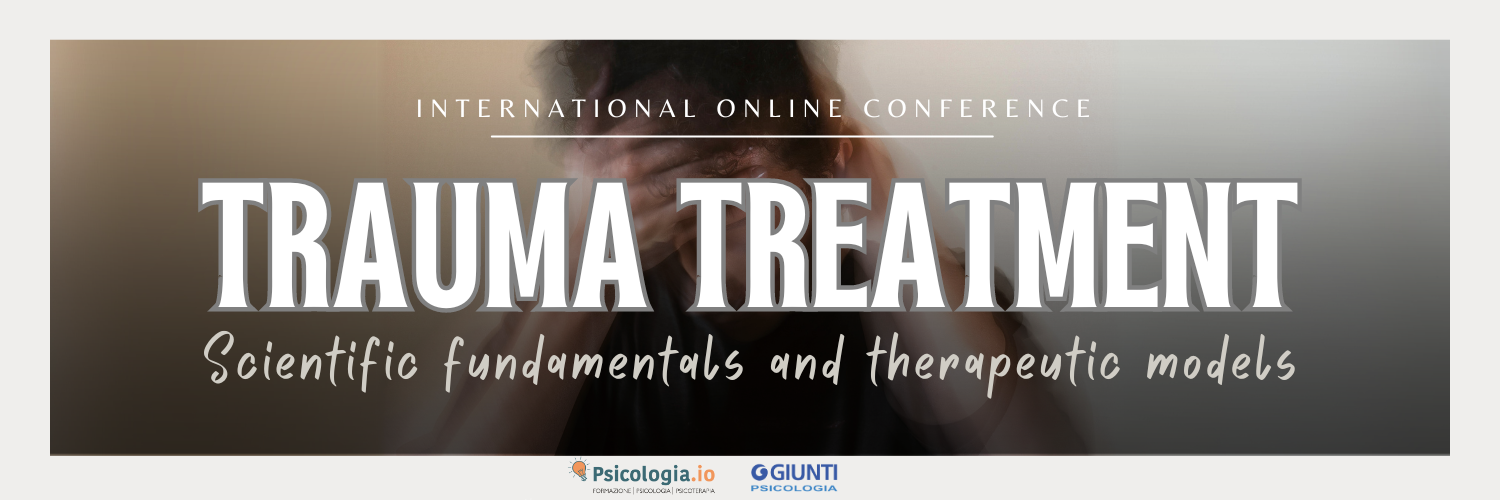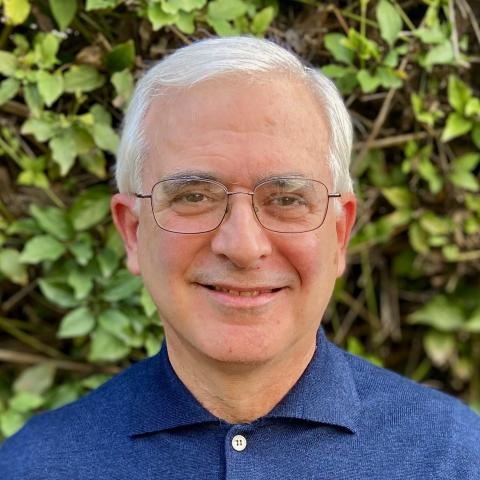
Trauma treatment
Scientific fundamentals and therapeutic models
Online Conference
Breaking Boundaries, Building Bridges: Psychotraumatology's Global Symposium
We live in a time where understanding and addressing trauma is more crucial than ever. The intersection of mental health sciences and trauma research provides fertile ground for the development of innovative approaches and effective solutions. This congress emerges as a guiding light in this terrain, addressing fundamental themes that deeply impact the mental health and well-being of individuals and communities worldwide.
This conference, stands as a beacon of knowledge and global collaboration, bringing together distinguished minds in the field of psychotraumatology.
It’s a groundbreaking event that transcends geographical boundaries and adapts to the demands of our current digital world.
Join us in this unique experience where online connection becomes the bond that unites us in the pursuit of soul healing. We look forward for your participation in this journey of discovery and growth!
PROGRAM
MODULE 1
Complex trauma and dissociation: definition and assessment
Giuseppe Craparo - Theory and clinic of dissociative trauma
Teresa Lopez-Castro - Past, Present, & Future: The science and evolution of integrated treatments for co-occurring PTSD and substance use disorder
Elizabeth Hembree - Treatment of PTSD by prolonged exposure
Stephanie S. Smith - Beyond the therapy room: Healing therapies for trauma
Sara Halligan - Understanding the role of socio-contextual factors in the development of child PTSD
MODULE 2
The origins of trauma
Clara Mucci - Traumatic effects and repair
Erik de Soir - Advanced Psychological Support as a Primary Trauma Prevention Method : Peritraumatic Field Support in Acute Trauma Situations
Orit Badouk Epstein - The development of the self in the presence of a frightening caregiver ("scare-giver") and the moves towards safety and growing
Judith Herman - Truth and repair
Ken Benau - Shame and pride in psychotherapy with relational trauma: From traumatic shame and dissociation to enlivened, pro-being pride
MODULE 3
Perspectives and treatments
Geert Smid - Brief eclectic psychotherapy for prolonged and traumatic grief
Lorraine Howard - Treating complex traumatic stress disorders in adults
Mirjam Mink - Nijdam - Brief Eclectic Psychotherapy for PTSD
According to a neo-Janetine perspective, the construct of "dissociative trauma" emphasizes the role of structural dissociation in relation to stressful events. The lecturer will highlight that trauma (or stress trauma) is such when the stress reaches, in the individual's experience, such an affective intensity that results in a dissociative rupture of his or her personality. By virtue of this, structural dissociation is not a consequence of trauma, but is the exact opposite: trauma is such precisely because of the disaggregation of personality.
The co-occurrence of posttraumatic stress disorder and substance use disorders (PTSD+SUDs) is common and impactful. Compared to individuals with only PTSD or SUD, PTSD+SUD is associated with lower treatment adherence, poorer outcomes, and higher suicide risk, all of which lead to increased mortality. Historically, the dominant philosophy for addressing PTSD+SUD advised treating substance use-related problems first, aiming to achieve a state of clinical stability, and then addressing PTSD symptoms. With a backdrop of PTSD+SUD’s epidemiology, this presentation will review the last quarter-century of scientific study into this comorbidity and the evolution of an integrated treatment framework within which both disorders are addressed concurrently.
1. Describe epidemiology of co-occurring posttraumatic stress disorder and substance use disorders (PTSD+SUDs), associated health risks, and shared mechanisms in this comorbidity’s etiology and maintenance
2. Identify historical, structural, and practice barriers in the United States to the optimal integration of psychiatric care for individuals with PTSD+SUDs
3. Review and evaluate the current empirical evidence base for integrated PTSD+SUDs approaches.
Posttraumatic stress disorder (PTSD) is a debilitating and distressing condition associated with significant psychiatric comorbidity as well as medical and psychosocial difficulties. In 2018 the ICD-11 added complex PTSD (CPTSD) as a distinct diagnosis. Originally described by Judith Herman in 1992 as a consequence of prolonged and/or repeated interpersonal trauma from which escape is impossible or difficult, complex PTSD diagnosis in ICD-11 requires symptoms from each of three core PTSD symptom clusters (reexperiencing in the here and now, avoidance, and exaggerated perception of threat) and symptoms from each of three “disturbances of self-organization” (DSO) symptom clusters (affect dysregulation, negative self-concept, and disturbed relationships). There has been debate in the past couple of decades about whether the treatment approaches that have been developed and successfully used to treat PTSD are sufficient or appropriate to treat the DSO symptoms of CPTSD, leading to research designed to specifically address this question.
Prolonged Exposure (PE) is a cognitive behavioral therapy designed to help trauma survivors with PTSD to emotionally process their traumatic experiences by helping them to confront or face traumatic memories and safe but avoided trauma reminders. PE has been used successfully with survivors of a range of traumatic events including rape, violent physical assault, childhood sexual abuse, terrorist attacks, combat, motor vehicle accidents and disasters, and has proven highly effective at reducing PTSD and other trauma-related symptoms. PE and other forms of exposure therapy for treatment of PTSD have been studied in over 60 randomized controlled trials (RCTs) (see meta-analysis by McLean, Levy, Miller & Tolin, 2022). Dr. Hembree will briefly review the results of recent studies comparing PE with phased treatments for participants with childhood abuse-related PTSD and DSO symptoms, and then will describe the core components of PE and how they are implemented in a standard 10 session course of therapy. This will be followed by discussion of how prolonged exposure is conducted and supported in a way that promotes access of trauma memories and expression of related feelings and thoughts while managing and tolerating affect so that capacity to process this information is retained. Clinical examples will be used to illustrate the interventions.
As many cultures around the world have known for centuries, there are many ways to treat trauma beyond talk therapy, and now research in Western medicine is catching up. These healing therapies explicitly target the neurophysiological impacts of complex trauma and encompass activities that are done outside the therapy room and often in community. The talk will cover three main reasons to consider these therapy approaches, the theoretical underpinnings of the various therapies, and any available evidence of effectiveness. Therapies discussed will include animal-assisted therapy including equine therapy, exercise, yoga, neurofeedback, tapping and acupuncture, drama, music, and dance. The hope is that those serving survivors of complex trauma will consider expanding their intervention approaches.
Following acute traumatic experiences, children are at risk of developing posttraumatic stress disorder and other adverse mental health outcomes. This presentation will consider the factors that influence the development of persistent posttraumatic stress disorder following trauma exposure in children, with a focus on the role that social (e.g., family support) and contextual (e.g., prevailing levels of trauma) may play in determining outcomes. Preliminary findings from research with children growing up in a high adversity, middle income country setting will be presented.
In this presentation we will deal with the levels of trauma described by Prof. Mucci, considering human hand trauma as having different effects from that resulting from natural catastrophe, as it impacts differently on the dimension of the self up to the lack of internal connection that we call "dissociation". Hyperarousal with lack of affective regulation and dissociation are indeed the main effects of this type of traumatization.
We will also evaluate the intergenerational aspects for the transmission of interpersonal trauma, emphasizing the value of attachment dynamics for transmission or the possibility of repair with respect to trauma. Indeed, the main protective factor with respect to future trauma is secure attachment.
Finally, Prof. Mucci will give indications for the repair of the traumatic cycle of repetition of these traumas through the mode of "embodied witnessing" described by the lecturer in recent writings Borderline Bodies, Norton, translated into Italian by Cortina, and Resilience and Survival, Confer Books/Karnac, translated and expanded in the volume just released with Cortina as Repairing the Future. How to create resilience across generations.
These last years, scientific research focuses more and more on the factors which can predict the development of psychological trauma after confrontation with potentially traumatic events. Peritraumatic dissociation, extreme anxiety, vehement emotions, pain and panic appear to be important predictors of chronification of post-traumatic sequelae in contemporary research (Bernat, Ronfeldt, Calhoun, & Arias, 1998 ; Marmar, Weiss, and Metzler (1998) ; Ozer et al. (2003).
Nijenhuis, Van Engen, Kusters, and Van der Hart (2001) suggested that both somatoform and psychoform peritraumatic dissociation implicate a failure of the somato-sensory system and the action schemas involved in the defence against an event which is qualified as life-threatening : the survivor is stricken is a peritraumatic reality which automatically means lack of systhesis, personification and impossible integration of the event, possibly leading to the prototypical symptomatology of PTSD.
In this presentation, the author will introduce an innovative method of Advanced Psychological Support currently used by fire, rescue and emergency services personnel to assist trauma survivors in the peritraumatic stage. A new kind of on-scene field support, inspired by hypnotic and relaxation techniques will aim the in vivo reduction of peritraumatic dissociation and focus on the reduction of extreme pain, noices, fears and loss of control in victims of severe motor vehicle accidents, pinched in the wreckage.
This evidence-based method seems to prevent considerable life losses and opens perpectives for peritraumatic trauma support – in combat operations - in military units and police services.
Mary Main and Judith Solomon (1986) were first to identify fear as an important factor in the face of the child's attachment needs and development. They later named it as the Disorganized attachment status.Their research findings has given us a new lens into the way we perceive human behaviour that is evident in many of our most traumatized clients who are in close proximity to their frightening attachment figures ("scaregivers", Badouk Epstein, 2015). Many clients with complex trauma have suffered chronic childhood injuries to critical areas in their development. The purpose of this webinar is to further professional understanding of the ongoing impact of the client's attachment betrayal and trauma, and it's adaptation as a means of survival. The lecture will look at the role the therapeutic relationship has as a focal point in the client's healing process. I will demonstrate this by discussing a client who was diagnosed with DID and suffered extensive abuse at the hands of her parents and family members. This led to her becoming her parent's possession, both colonizing and fragmenting her body and mind. It was the safety and reliability of the therapeutic relationship which helped alleviate her dissociation and move towards feeling more, present, more real and more connected to the world surrounding her.
Crimes of gender-based violence, like other crimes against subordinated groups are generally crimes of impunity. Victims are blamed, shamed and isolated, so that the violence becomes hidden and socially invisible. Shame and isolation in turn predict the malignant psychological harms of complex trauma, including the formation of a defiled identity. This talk, based on personal interviews and published accounts, explores survivors’ views of what might be a just resolution of the crimes they had suffered. In general, survivors wished above all for the truth to be known and the perpetrators exposed. Beyond this, their focus was on restoring their relationships, not primarily with the perpetrators, but rather with the “moral community” from which they had been isolated. Finally, rather than punishment of perpetrators, survivors frequently prioritized prevention of future harm.
Learning Objectives:
1) To understand the rules of dominance and subordination
2) To understand the rules of mutuality
3) To understand the importance of bystanders to survivors.
4) To name three important principles of justice to survivors in this study.
Following a brief definition of relational trauma, Dr. Benau differentiates characteristics of both adaptive and maladaptive shame and pride subtypes. Next, several relationships between embodied traumatic shame states (shame states) and disembodied dissociation, both as detachment and structural dissociation, are presented. Verbatim transcription from two psychotherapy sessions with a survivor of relational trauma will document one patient’s transformation from shame states, to adaptive pride, and finally pro-being pride. Pro-being pride is the experience of taking delight in one’s unique ways of being and relating to oneself, others, and in the world. There will be opportunity for conversation with participants toward the end of this presentation.
Brief Eclectic Psychotherapy for Prolonged and Traumatic Grief (BEPPTG) is designed to address the unique needs of individuals with prolonged and traumatic grief. Prolonged grief refers to a clinical diagnosis of prolonged grief disorder (PGD) according to current international criteria (DSM-5-TR and ICD-11). Traumatic grief refers to a clinical diagnosis of PGD with comorbid (symptoms of) posttraumatic stress disorder (PTSD) and/or major depressive disorder (MDD) following confrontation a traumatic loss of a loved one. Traumatic loss refers to the death of a loved one in the context of potentially traumatizing event(s), including homicide, suicide, violence, an accident or a disaster. BEPPTG is a flexible and adaptable approach, which can be tailored to meet the diverse needs of individuals faced with complex meaning attribution following loss. It integrates evidence-based cognitive behavioral interventions for persistent grief, post-traumatic stress and depression with culturally sensitive, meaning-focused and experiential interventions. BEPPTG consists of the following components: psycho-education about prolonged and traumatic grief; grief- and trauma-focused exposure; attribution of meaning, reengaging and activation; and symbolic interactions (e.g., writing assignments, imaginary conversations, rituals). This presentation introduces participants to all components of BEPPTG. Following introductory remarks on diagnosing prolonged and traumatic grief, the BEPPTG approach is explained. There is room for questions.
Many clinicians feel knowledgeable about trauma or substance misuse, but often not both, and may lack specialized training or experience in approaching these dual concerns clinically. Similarly, many clinicians are confident in using exploratory, psychodynamic interventions and/or cognitive-behavioral and skills-based modalities, but feel uneasy about how and when to integrate these methods, particularly when working with co-occurring trauma and substance use issues. These issues are so frequently intertwined in complex ways and often only emerge as treatment progresses, creating challenges for clinicians around how to manage these complicated cases. This session is intended to help clinicians bridge these gaps in knowledge and practice by providing a unifying framework, examining the challenges of working with trauma and SUD, and engaging in a clinically focused conversation with the experts.
In this lecture on Brief Eclectic Psychotherapy for PTSD (BEPP) the five essential elements of this treatment are presented: psycho-education, imaginal exposure, writing assignments and mementos, meaning making and the farewell ritual. The core of the treatment is to experience and express the emotional impact of the traumatic events and learning from them. The therapeutic elements will be illustrated by short video fragments. The similarities and differences with other forms of trauma-focused treatment will also be addressed, with meaning making as focal point as this phase often has additional value for therapists and patients. As the name indicates, BEPP is an eclectic treatment in which elements from different therapeutic schools are combined in a logical manner. This takes place according to a manual in which all important steps and elements are carefully described. Several randomized controlled trials have shown the efficacy of BEPP for police officers and various other target groups of patients with PTSD including those with a history of complex trauma. Based on this evidence BEPP is recommended in several international treatment guidelines for PTSD.













- Recordings available for 12 months from purchase
- All materials are downloadable